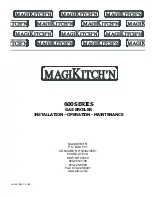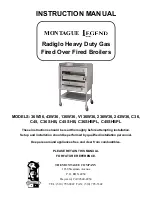
8.1 Heating water buffer cylinder on request
Heating water buffer cylinder (customised)
Special order
We supply buffer cylinders for a wide variety of applications on cus-
tomer request.
Version:
■ Steel S 235 JRG2, untreated inside, anti-rust coating outside
■ Max. temperature: 95 °C
Information required:
■ Max. operating pressure in bar (MPa)
■ Max. temperature in °C
■ Capacity in litres
■ Maximum dimensions:
7
, height and height when tilted (without insulation)
■ Connections: Type, number
Thermal insulation for special version heating water buffer cyl-
inders
Special order
Suitable thermal insulation made from fleece or rigid foam shells
(single or multi part) can be supplied on request.
Note
We are happy to assist you with the design of the heating water buf-
fer cylinder.
Design information
9.1 System design
Selecting the rated heating output
Select solid fuel boilers according to the required heat load. The
boiler must be planned as a base load boiler and always operated in
conjunction with a buffer cylinder (management). The correct system
design point therefore does not depend on the nominal load specifi-
cation (i.e. the building heat load), but rather on the required duration
of use (length of the heating season, heat demand).
Note
For locations over 1500 m above sea level, the project enquiry must
include details about the precise geographical location (altitude and
address of the location).
Safety temperatures
These boilers comply with EN 303 and DIN 4702. They can be used
in accordance with EN 12828 in sealed unvented heating systems.
■ Permissible flow temperatures (= safety temperatures):
Up to 110 °C
■ Max. possible flow temperature:
Approx. 15 K below the safety temperature
■ High limit safety cut-out of the boiler control unit:
Delivered condition 100 °C
9.2 Delivery
Viessmann delivers to the site. The system is unloaded on site.
A special crane is required on site for unloading.
The personnel carrying out transportation must be aware of accident
hazards and take appropriate measures to prevent them. The boiler
should only be lifted when it is completely empty (water, fuel, ash).
Lifting the solid fuel boiler
Lifting eyes must be fastened to the points provided for lifting the
combustion base. After unloading, the lifting eyes must be removed.
The heat exchanger is lifted at the lifting eyes provided for this pur-
pose and placed on the combustion base.
Note
See "Siting", page 84.
9.3 Positioning
Handling
The combustion block has 4 lifting eyes that must be screwed in
before lifting. Lifting gear can be attached to these lifting eyes.
The heat exchanger of the Vitoflex 300-UF has 2 lifting eyes to
which lifting gear can be attached.
A special crane (on site) is required to lift the combustion block and
heat exchanger.
Viessmann experts undertake handling and siting on prepared foun-
dations.
Recommended minimum clearances to walls for installation and
maintenance work must be observed.
Provision should be made for a heat-resistant, vibration-absorbing
boiler base if structure-borne noise attenuation is required.
Heating water buffer cylinder
84
Viesmann
VITOFLEX 300-UF
8
5682428
















































